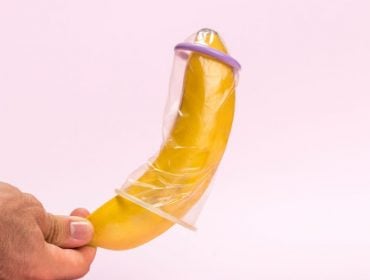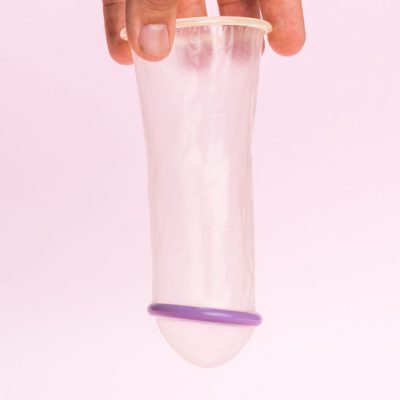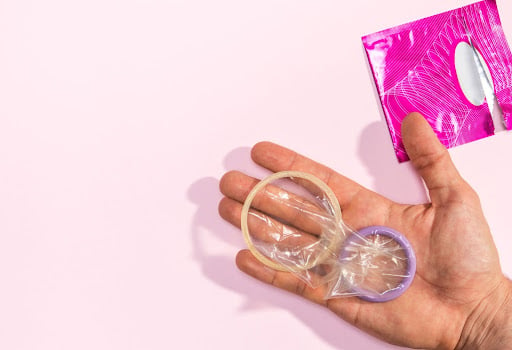What Is A Female Condom?
FC2
A female condom is a barrier method of birth control that can be inserted into the vagina to prevent pregnancy. It’s also known as FC2, which stands for Female Condom 2nd Generation. There are many benefits to using this type of contraceptive method, including the fact that it doesn’t require a prescription and can be purchased over-the-counter. Plus, it offers added protection against STDs such as HIV/AIDS and herpes. Despite these advantages, many women don’t know how to use them or whether they should rely on condoms in general. To help you make an informed decision about what type of contraception works best for you (and your partner), read on below!
What’s the difference between male and female condoms?
So what’s the difference between male and female condoms?
Well, for starters, both are made of latex (or plastic or polyurethane), and both prevent pregnancy by acting as a barrier to semen. However, they are different in terms of size, shape and how they’re used:
- Male condoms are put on by the man before sex begins. They’re bigger than female condoms and have more ribbing inside that may increase sensation for him during sex.
- Female condoms go inside the vagina before intercourse begins so that they cover both sides of the vagina; this helps protect against STDs as well as unwanted pregnancies. The female condom also has a ring at each end to help hold it in place during intercourse.
How do I use a female condom?
To use a female condom, you’ll want to lubricate the outside of the device with plenty of water-based lube. You’ll then put it inside your vagina and push it back until its inner ring is at least 2 inches from your vaginal opening. The outer ring should rest against the outer lips of your vulva. The inner sleeve should be nice and snug, but not uncomfortable (you can adjust how tight it is by squeezing or pushing on each end).

Once in place, you’re protected against pregnancy for up to 8 hours—so don’t forget about any condoms or spermicide that you may have planned on using along with the female condom! If this isn’t enough time for you, there are other options available if you need extra protection: use both male and female condoms together at once (this provides double protection), use another form of birth control like an IUD or hormonal birth control. Also a good idea to get tested for STDs every 6 months so they don’t interfere with your efforts toward safer sex.
Female Condom Effectiveness
Are female condoms more effective than male condoms?
The answer depends on what you mean by “effective.” Female condoms offer better protection against sexually transmitted infections (STIs) than male condoms, and they’re more effective at preventing pregnancy when used correctly. But in terms of preventing pregnancy, a woman can sometimes have an unintended pregnancy even when using birth control perfectly. (This is called user failure.)
So, it’s only fair to say: Female condoms are more effective at preventing STIs than male condoms. The two methods are equally effective at preventing pregnancy when used correctly and consistently—but female condoms offer some extra protection that men don’t get with conventional male condom use alone.
That said, the difference between these two methods is pretty small: Only about 6 out of 100 people who use female condoms will experience an unintended pregnancy over the course of a year; for those who use male condoms alone? That number jumps up to 18 out of 100 people!
Do female condoms protect against STIs?
Yes! Female condoms do protect against sexually transmitted infections (STIs). They have the same effectiveness as male condoms, so you can use them the same way.
- If a female condom breaks (for example, if it rips or slips off), you should remove it and immediately use another one. We recommend using backup barriers like male condoms or female condoms in addition to other safer sex supplies such as dental dams and gloves.
- You can also get tested for STIs at any time if you think that you might have been exposed to one through unprotected sex or a condom breakage/slip-and-slide.
Is it ok to use a female condom with another method of contraception?
It’s fine to use a female condom at the same time you use another method of birth control, like the pill. Using two different forms of contraception gives you extra protection against pregnancy and STIs.
Using a female condom or birth control does not increase the risk of side effects from either method when used together. When used properly, female condoms are 95% effective.
Female Condom Price
How do I get a female condom? How much does it cost?
First things first: you can find female condoms at your local pharmacy. The cost of a box of 12—which gives you access to two free samples—can range from $2-$4 per condom, depending on where you get it from. You can also get them from Planned Parenthood and other health clinics or sexual health service providers for free in most cases. Of course, buying them online is another option.
You can possibly get them covered by insurance by getting a prescription for them on the FC2 website.
Can I use a male condom and a female condom at the same time?
No, you can’t. The good news is that they are both effective at preventing pregnancy. The friction caused by multiple condoms could result in tears or breakage of one or more of the condoms (and then you’d be dealing with an unplanned pregnancy).
Also, do not reuse condoms and do not flush them down the toilet as they can clog the toilet. You can dispose of it in the trash after using it one time.
Female condoms are an easy-to-use birth control method that can also help prevent STIs.
Just like the male condom, female condoms are an easy-to-use birth control method. Female condoms are safe, effective and can be used by most women.

Female condoms have no side effects and can be used with other methods of birth control—like a copper IUD or NuvaRing—to help prevent pregnancy and protect against STIs. They are available in many countries around the world, but not all (yet). If you have questions about FC2 or female condoms, feel free to reach out to the STD condom and female condom specialists here at STD Check. We hope this article helps educate and create greater awareness about the lesser-known world of the female condom.
Secure and Confidential
STD testing services
The fastest results possbile - available in 1 to 2 days

Tagged
Categorized As
Author: Esther Jordan
Esther Jordan has been a writer ever since she can remember. She has always loved the free gift of self-expression through journaling, creating stories, and sharing life experiences in front of audiences. Public speaking and creating content has been a strong suit of hers since high school. Immediately after college, she received a paid position as an search engine optimization (SEO) writer in 2010 when SEO was still a very brick and mortar concept for a lot of small businesses. It was a time of do-it-yourself websites and online magic that everyone wanted and either referred to it as SEO or pay-per-click (PPC).




